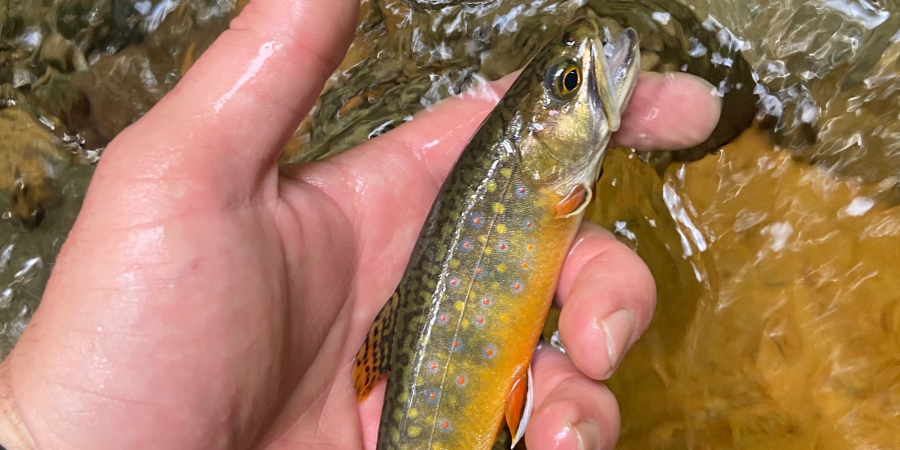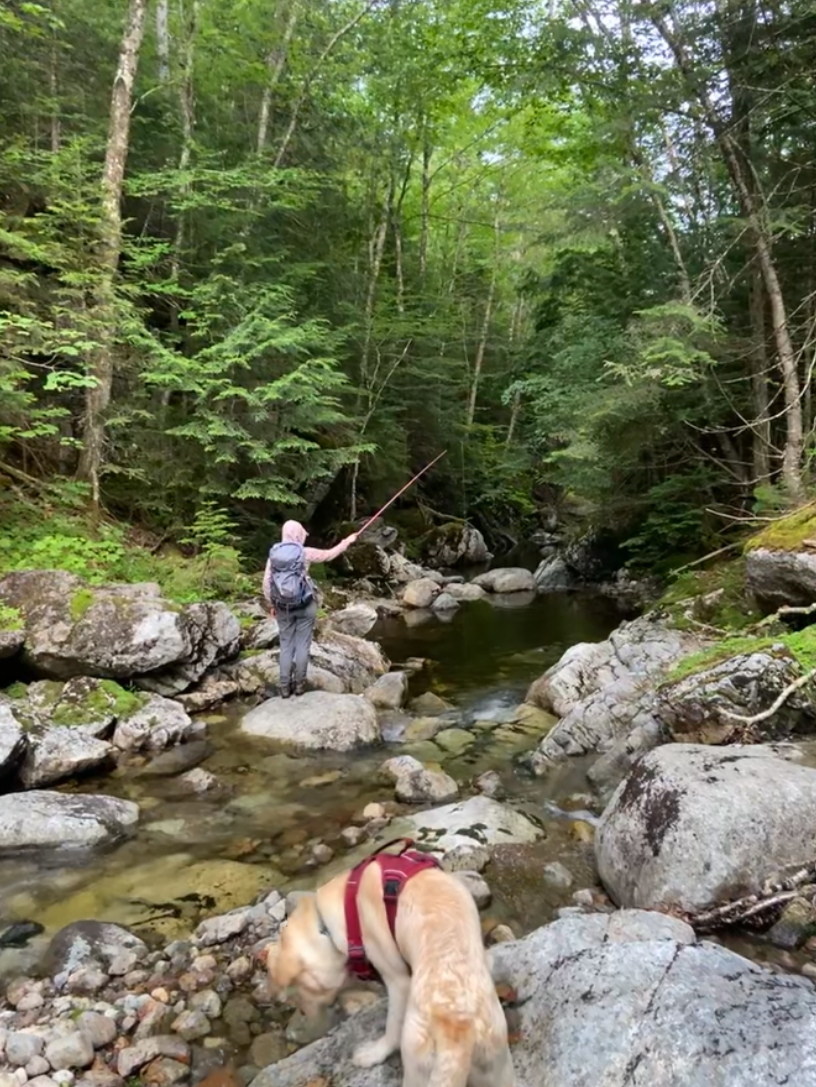As the River Steward at the Ausable Freshwater Center, I talk with many anglers on the Ausable River. When talking about their fishing experiences, anglers will often describe shaded streams, quiet breezy mornings with the birds, and exciting trips to other continents. Every day an outdoor recreationist spends on the water leads to more curiosity about the ecology that connects and supports that watershed. While rivers are beautiful from above, there is even more to see under the surface. Seeing the intricate pattern of a brook trout, the predatory gaze of a walleye, the goofy blank expression of a pumpkinseed, and the stunning coloring of an Atlantic salmon all build a strong connection with nature. Catch-and-release fishing allows anglers to catch a glimpse of the underwater world while minimizing impact.
Catch-and-release was widely popularized in the 1970s, in part because tournament fishing raised concerns about post-release mortality. After extensive research, scientists recommended changes to handling practices, gear, and regulations. Modern approaches to ethical catch-and-release angling are explored in this blog, the first in a two-part series. Part 1 focuses on temperature and why it matters for trout.
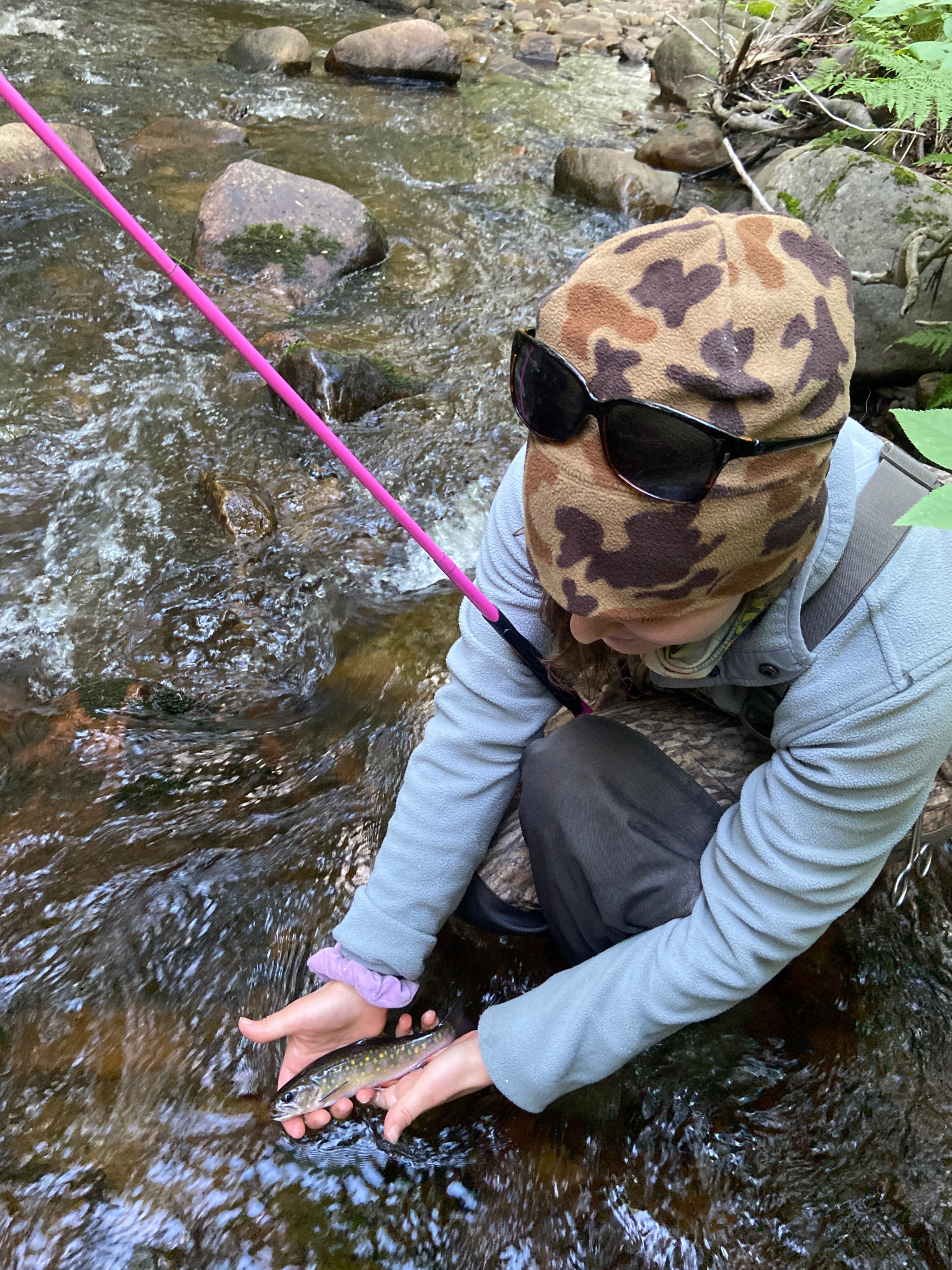
Catch and release can reduce negative impacts on fish populations, but it must be done carefully. This set of recommended best practices can lower direct mortality and reduce sub-lethal stressors that affect growth, reproduction, and disease resistance.
Not all fish species have been studied equally under catch-and-release conditions; and sensitivity varies. Trout (brown trout, brook trout, rainbow trout, and lake trout), are coldwater salmonids and are generally more sensitive to thermal stress than warmwater species like largemouth bass. This makes fishing within certain temperature limits especially important.
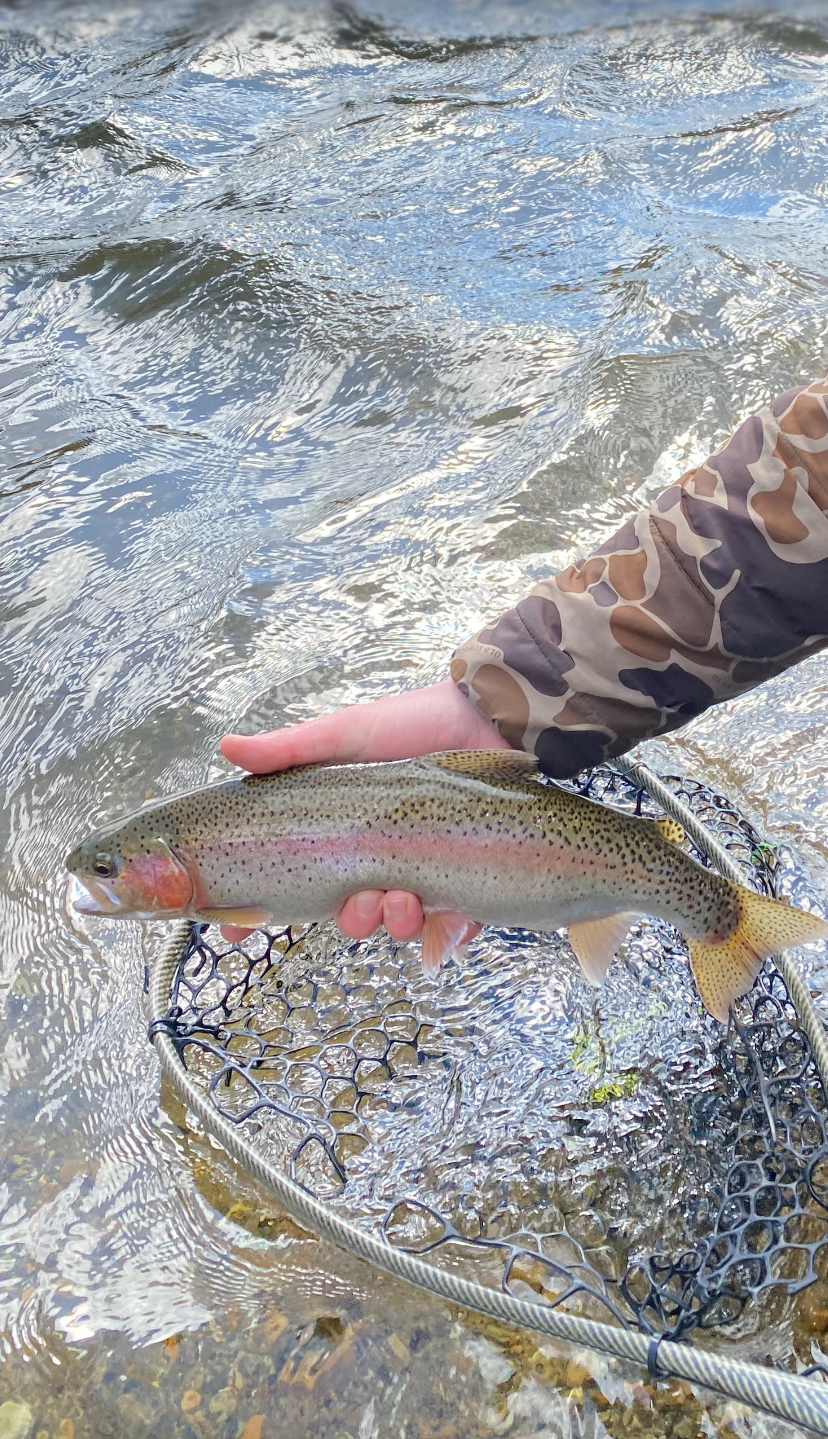
Most post-release mortality occurs within the first 24-72 hours. While some mortality events are unavoidable, following these proven methods can reduce fatalities and unnecessary stress to fish: 1) following temperature limits, 2) utilizing proper gear, 3) minimizing air exposure and fight time, and 4) keeping fish wet. Keep reading to learn how heat affects fish and why it’s so important to follow temperature guidelines when fishing.
Support our biodiverse habitats work for wildlife and their habitats. Give with confidence today!
Heat Stress and the Science Behind It
As water warms, levels of dissolved oxygen drop and fish are less capable of meeting their need for oxygen. Heat stress is a fish’s response to the reduced oxygen in warmer water. The optimal range for trout is the mid 50s to the low 60s, and many studies have demonstrated reduced reduced growth and increasing stress as water temperatures rise from this range. Physiological studies show reduced growth and rising stress at lower or higher temperatures depending on species and population. Most fisheries, agencies, and anglers use ~68°F (20°C) as a rule-of-thumb threshold for trout angling; because while trout may be able to survive at this temperature, stress from angling compounds thermal stress. When in doubt, check the water temperature at the site and choose cooler tributaries or different species if it’s too warm.
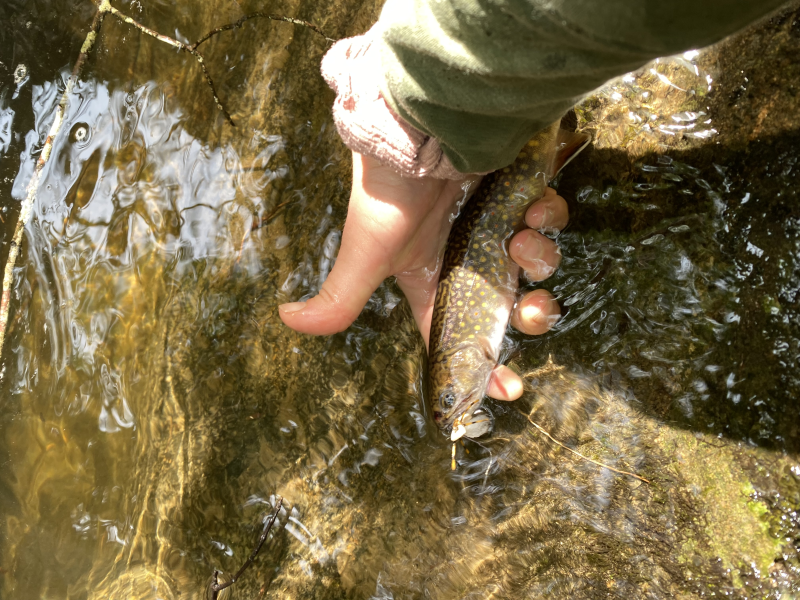
On an individual level, trout will respond to the heat by moving to cooler microhabitats, or areas of thermal refuge: pools, deep water, and cool tributaries. When habitats are disconnected or stress limits trout from moving to cooler water, they may occupy waters that are tolerable at rest, but conditions become risky when an added stress (like angling) occurs — a fish fighting the hook in 72°F water would be similar to attempting a difficult work out on a very hot day.
What Are Best Practices to Limit Stress-Related Mortality?
- Always carry a thermometer. Water temperature is more important than air temperature, so it is always important to check water temperatures with a thermometer on hot days or to or contact a local fly shop to get an estimate from someone who has been in the water recently. When the water is warm, trout will not only be at significant risk of mortality from angling, but they will also have less of an appetite due to the heat. The same section of river that had trout rising left and right in May will look like a ghost town in July…but with more mosquitoes.
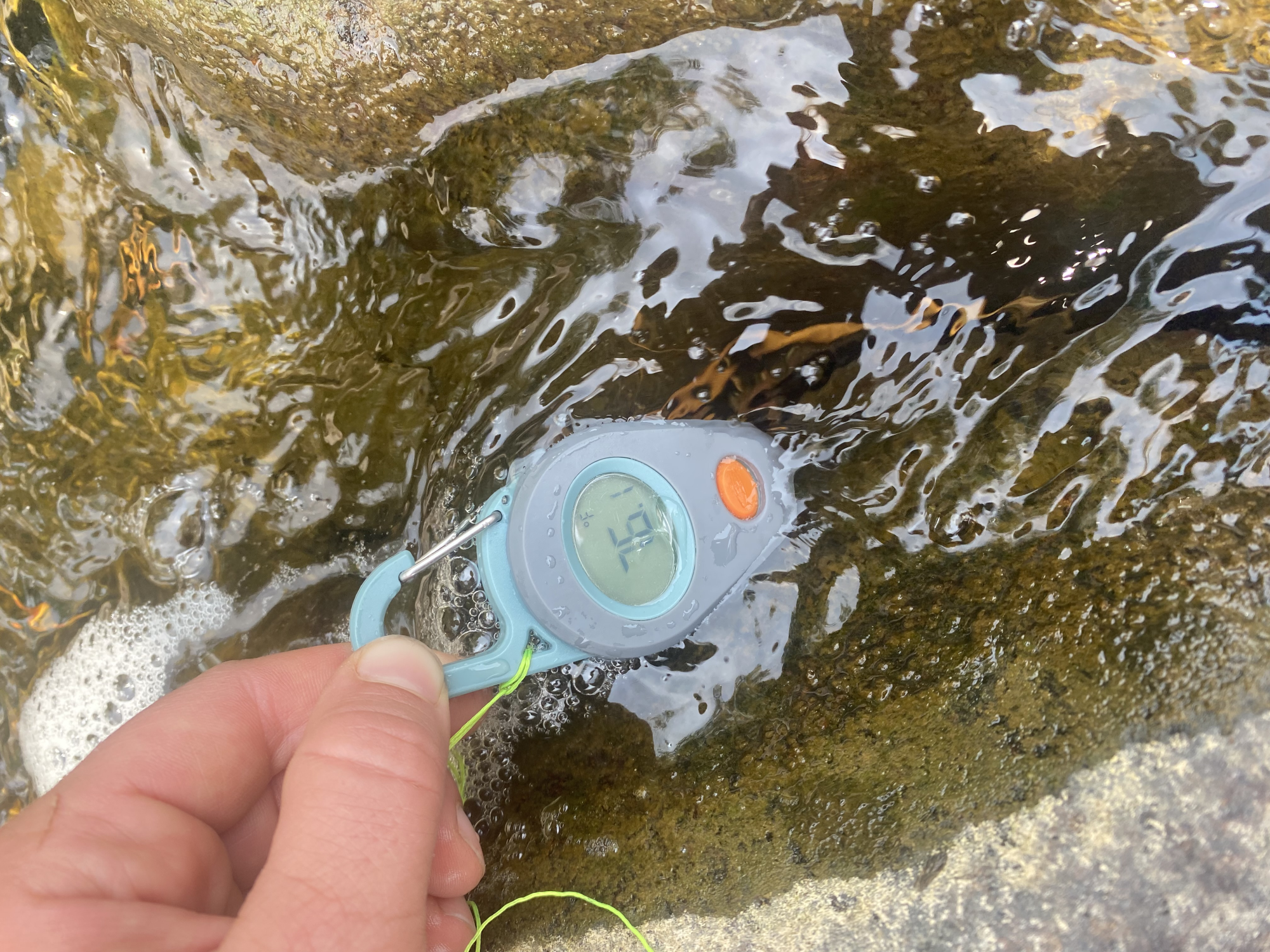
West Branch Ausable, July 30 2025, with an air temperature of 82°F.
- If the water temperature exceeds ~68°F (20°C), avoid trout angling or choose a cooler spot. Some tributary streams will still drop below 68°F on a regular basis in the summer. Local fly shops and guide services will have maps to search out these hidden gems. Look for the river’s headwaters or for streams which drop quickly from cooler high elevations. These maps will also show dams along a stream, which can be a blessing or a curse. Dams fed from the bottom of a reservoir can be good places to seek out on warmer days; but topwater-fed dams result in tailwater that will generally be warmer than the rest of the stream. Regardless of waterbody type, be sure to check stream temperatures on hot days to be certain it’s cool enough to fish.
- Only fish in the early morning. On hot days, follow “hoot owl” guidelines and limit fishing to early morning hours, assuming the evening temperatures have been low enough to allow the river to cool overnight. While not in place in NYS, many states have hoot owl regulations prohibiting fishing during the hottest part of the day to protect their trout fisheries. The name is derived from 20th century logging camps that only worked in the summer while the owls were still calling early in the morning to prevent wildfire risk.

Photo courtesy of Larry Master, masterimages.org.
- Target warmwater species. Not all fish are affected in the same ways by heat. While trout, as a coldwater species, are sensitive to warm temperatures, other fish, like bass, pike, and walleye, are more adaptable to the heat. NYSDEC lists places for warmwater fishing here.
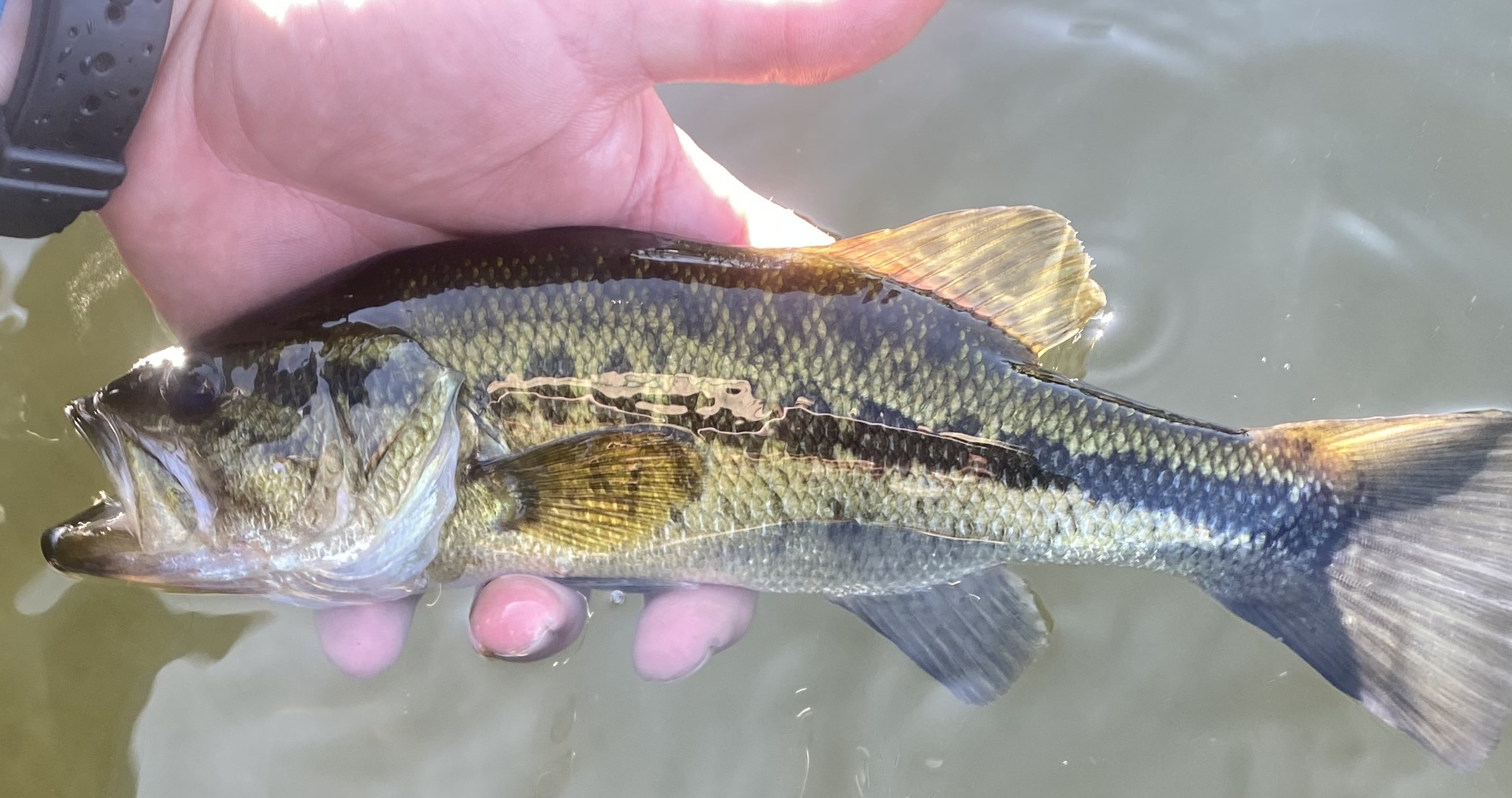
Summer has its own variations, like seasons. The cooler conditions can provide excellent trout fishing experiences. Warmer days can be an excellent time for warmwater fishing or tributary hikes. And the hottest days? Those are best spent paddling, swimming, and giving the fish a break. There is no shortage of summer activities in the Adirondacks.
Part 2 will cover air exposure, fight time, and some gear considerations to support catch-and-release best practices and improve post-release survival.
Story by Naomi Hodgson, River Steward.
Sign-up for our e-newsletter to get weekly updates on the latest stories from the Ausable Freshwater Center.
